How to Choose between a Traditional Mountain Bike and an Electric MTB?
Mountain biking is booming, whether on mountain trails, in the forest, or on groomed tracks. Today, riders often face a common decision: go for a traditional (muscle-powered) mountain bike or opt for an electric mountain bike (also known as e-MTB or VTTAE in French). This dilemma affects both beginners and regular riders, each looking for the best solution based on their goals, fitness level, and budget.
This article explores in depth the differences, pros, and cons of each type of mountain bike to help you make an informed and lasting decision.
Understanding the Basics
What Is a Traditional Mountain Bike?
A muscle-powered MTB is the classic version of a mountain bike, propelled entirely by the rider’s leg power. It’s appreciated for its lightweight design, mechanical simplicity, and low maintenance cost. It provides a full physical workout and requires good physical condition, especially on rough or hilly terrain.
What Is an Electric Mountain Bike (e-MTB)?
An electric MTB comes equipped with a motor that assists pedaling. This assistance only activates when pedaling, distinguishing it from scooters or motorcycles. It makes climbing easier, enables longer rides, and opens up technical terrain to a broader audience.
Main Technical Differences
- Motor: None on a traditional MTB; integrated into the crank or rear wheel on an e-MTB.
- Weight: Electric bikes weigh 20–25 kg vs. 12–15 kg for muscle-powered ones.
- Battery range: Typically 40 to 100 km depending on usage and model.
- Price: e-MTBs are two to three times more expensive than equivalent traditional MTBs.
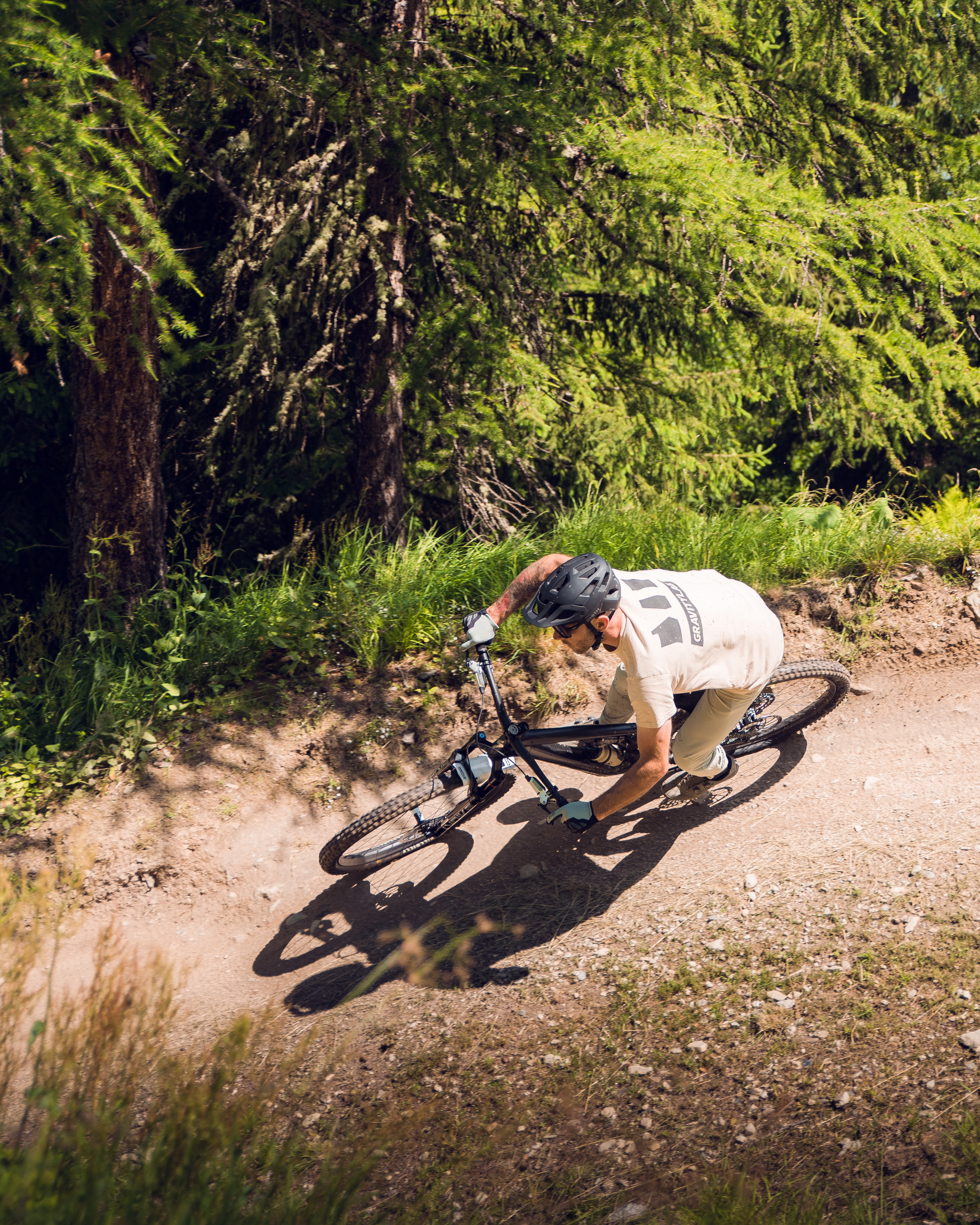
Pros and Cons of a Muscle-Powered MTB
Advantages
- Affordable: Traditional MTBs are usually much cheaper.
- Lightweight: Easier to carry, maneuver, and store.
- Low maintenance: No battery or motor to manage.
- Pure sport experience: Ideal for riders who enjoy physical effort and performance.
Disadvantages
- High physical demand: Steep climbs and long rides can be discouraging.
- Less accessible: Not suitable for people with limited fitness or injuries.
- Lower average speed: Less efficient on long or technical trails.
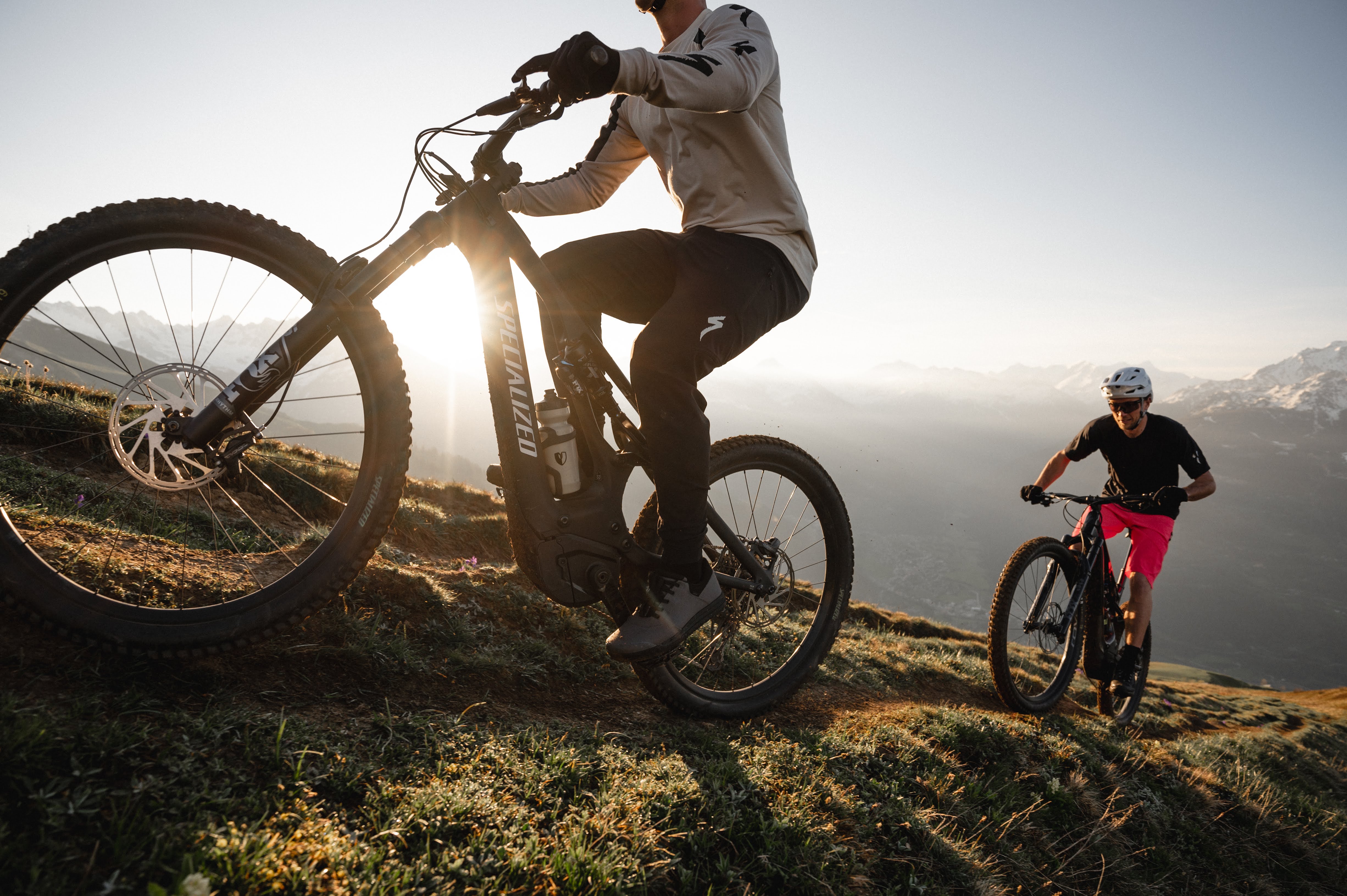
Pros and Cons of an Electric MTB
Advantages
- Pedal assistance: Helps with steep climbs and longer rides.
- More accessible: Great for less athletic, older, or recovering riders.
- Versatile: Makes it easier to follow experienced riders or explore new terrain.
- Less fatigue: Perfect for long trips without exhaustion.
Disadvantages
- High cost: e-MTBs are significantly more expensive.
- Heavy weight: Batteries and motors add considerable mass.
- Complex maintenance: Electrical components require specific care.
- Battery dependence: Running out of charge can ruin a ride.
Which Rider Type Are You?
Beginner or Casual Rider
Beginners are often drawn to e-MTBs for their ease of use. They make biking enjoyable even for less fit individuals. However, a traditional MTB is also a good choice for short, non-technical rides.
Experienced or Competitive Cyclist
Performance-driven cyclists usually prefer muscle-powered MTBs for their raw, athletic experience. That said, e-MTBs are useful for extended or varied sessions without overexertion.
Based on Age and Physical Condition
Older individuals, those returning to sport, or those with joint pain will benefit more from e-MTBs. Younger, fitter riders often opt for traditional MTBs for a more intense workout.
Intended Use: A Decisive Factor
Leisure Rides vs. Competition
For leisure, family outings, or tourism, the e-MTB is the top pick. For competitive riding or intense training, the traditional MTB still rules.
Technical Trails or Forest Paths?
Technical trails require the maneuverability of a muscle-powered MTB. For forest paths or rolling terrain, the e-MTB provides comfort and ease.
Average Ride Duration
For outings over 2–3 hours, an e-MTB is a real asset. For shorter loops, a traditional MTB works perfectly well.
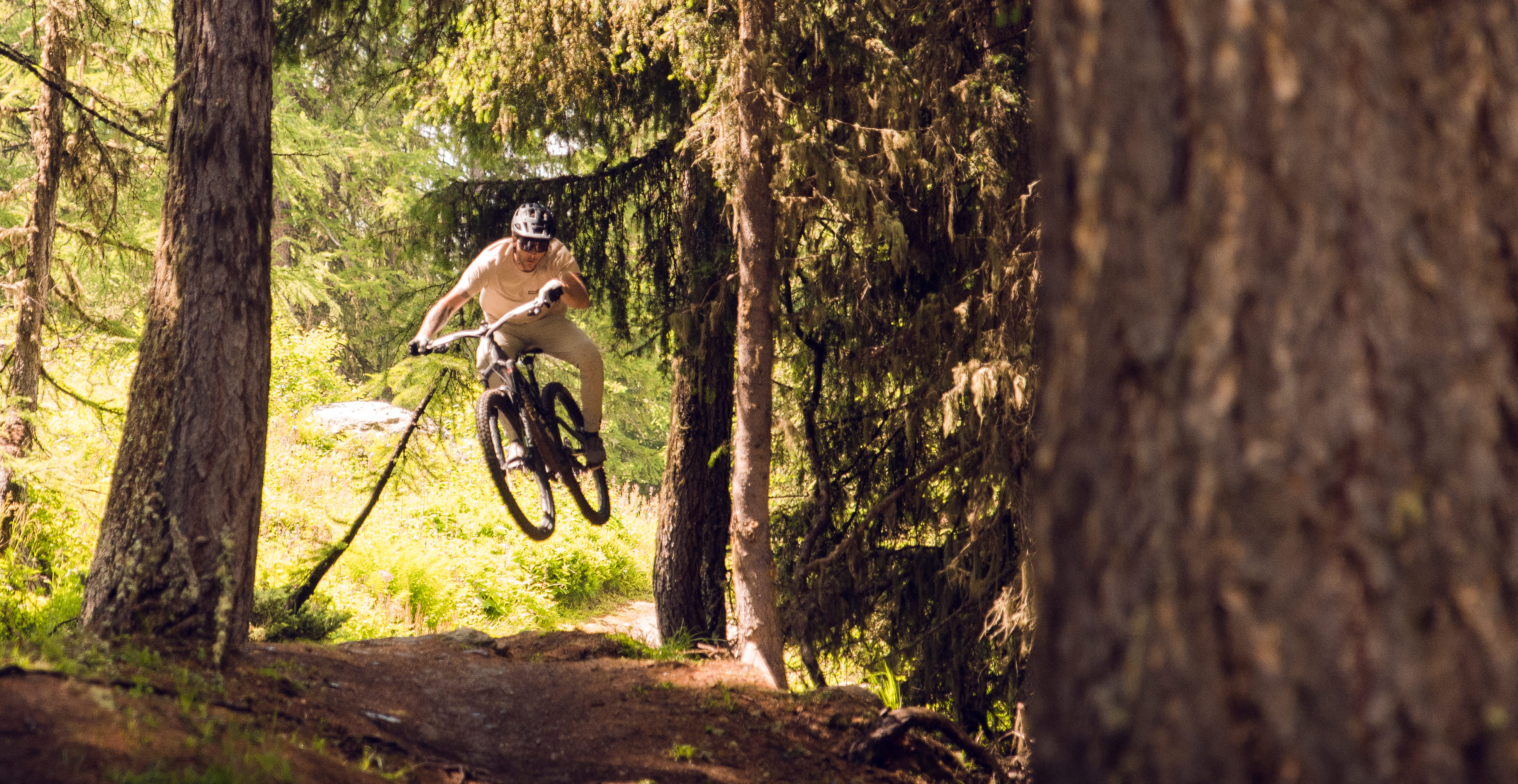
Budget Consideration
Purchase Price Comparison
A standard MTB costs €400–2,000, while e-MTBs typically start at €2,000 and can exceed €6,000 for premium models.
Long-Term Maintenance Costs
Muscle-powered bikes require basic maintenance. e-MTBs require attention to batteries, motors, and electronics. Battery replacement alone can cost €400–800.
Subsidies and Incentives
Some governments offer financial support for e-bike purchases—between €200 and €600 depending on income and bike type. Check your local programs.
Battery and Range Questions
Battery Life by Use
Range varies from 40 to 100 km based on terrain, rider weight, assist level, and battery size. Larger capacities (500 Wh or more) are best for hilly or long rides.
Charging Time
Most e-MTB batteries charge in 4–6 hours. Fast chargers exist but may reduce long-term battery life if overused.
Weight Impact
Batteries can add 2.5–4 kg. This affects handling, especially at low speed or during portage.
Riding Comfort and Handling
Weight and Maneuverability
Traditional MTBs are more agile, ideal for tight, technical trails. e-MTBs feel more stable downhill but are harder to lift or push.
Riding Position
e-MTBs often have a more upright geometry to balance the added weight. This improves comfort but can reduce handling precision.
Suspension and Components
Some e-MTBs use reinforced suspension for added durability, though it may require more maintenance over time.
Maintenance and Durability
Repair Frequency
Traditional MTBs are simpler to maintain. e-MTBs require specialized service for electronics, software, and heavier wear due to weight.
Parts Availability
Standard MTB parts are widely available. e-MTB parts can be brand-specific and more costly to replace.
Environmental Exposure
Both bikes can handle mud and wet conditions, but e-MTBs must be carefully cleaned to protect electronic components.
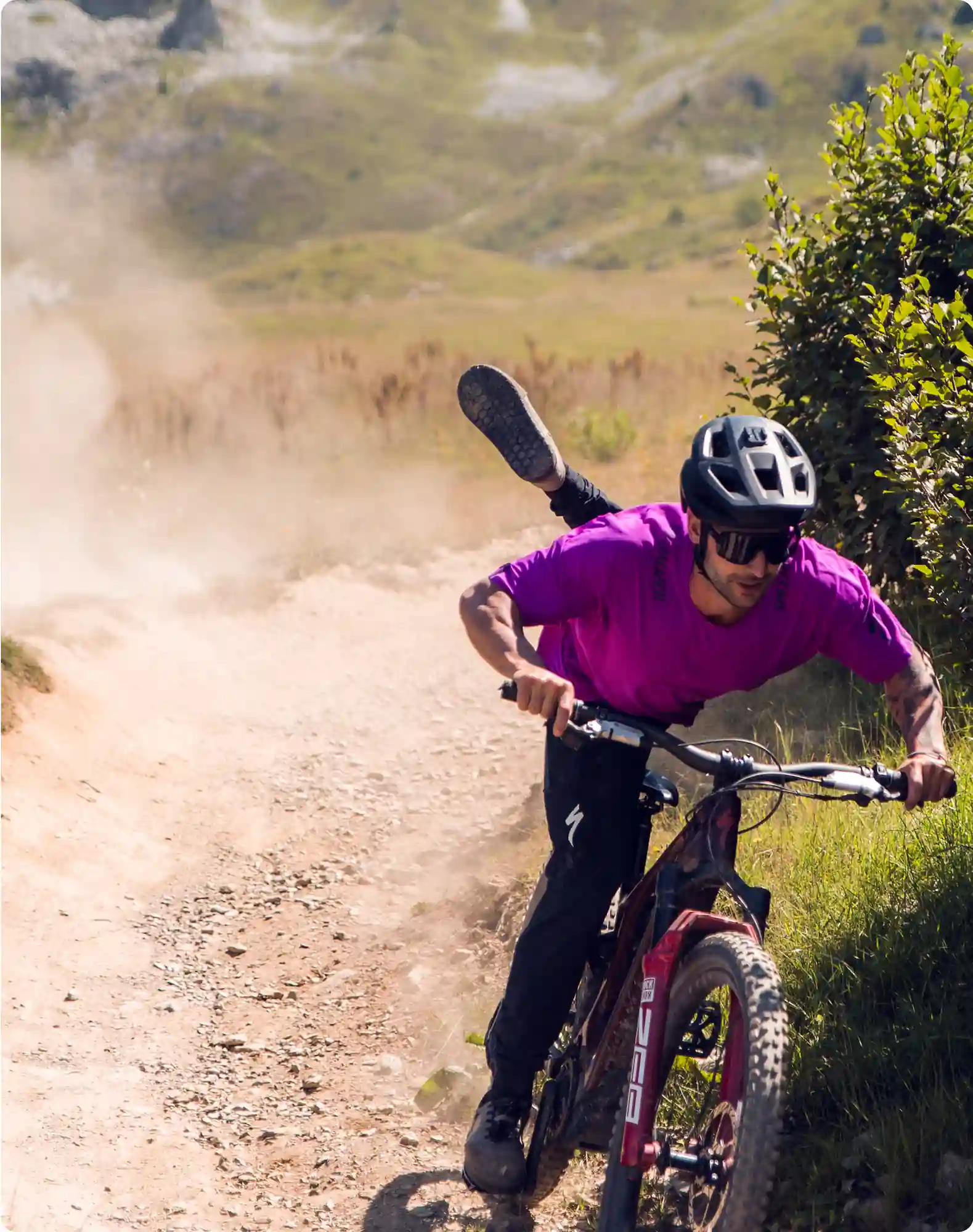
Environmental Impact
e-MTB Production and Lifecycle
Producing e-MTBs consumes more resources due to batteries and electronics. Recycling and transport also add to its carbon footprint.
Muscle-Powered MTB Impact
Traditional bikes are greener: no power consumption, no batteries, and easier recycling.
Battery Recycling
e-MTB batteries require proper disposal in certified centers. Some brands offer battery return programs, but the infrastructure is still evolving.
Expert Opinions
Experienced Riders’ Views
Many riders say e-MTBs enhance the joy of riding and expand possibilities. Some rediscovered their passion thanks to electric assistance.
Bike Shop Professionals
Retailers agree: e-MTBs represent the future for casual users. Brands are investing heavily, while traditional MTBs remain favored by purists and racers.
Real-World Feedback
e-MTBs allow longer, more varied rides. Muscle-powered bikes offer a purer, performance-driven experience. Your choice depends on the type of fun you’re after.
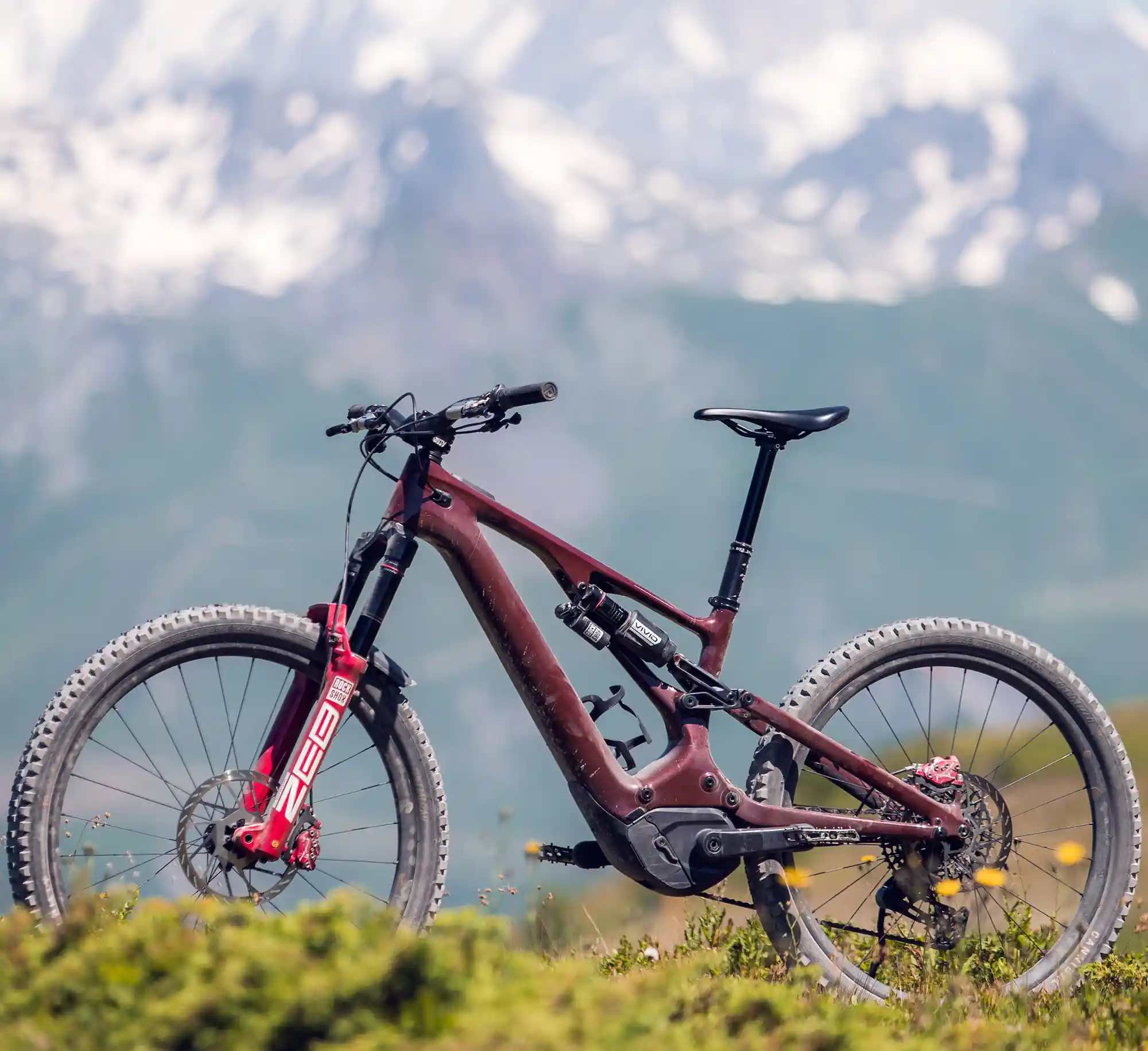
Expert Opinions
Experienced Riders’ Views
Many riders say e-MTBs enhance the joy of riding and expand possibilities. Some rediscovered their passion thanks to electric assistance.
Bike Shop Professionals
Retailers agree: e-MTBs represent the future for casual users. Brands are investing heavily, while traditional MTBs remain favored by purists and racers.
Real-World Feedback
e-MTBs allow longer, more varied rides. Muscle-powered bikes offer a purer, performance-driven experience. Your choice depends on the type of fun you’re after.
Try Before You Buy
Where to Test Ride?
Test rides are available at bike shops, trade shows, or demo events organized by brands. This hands-on experience is crucial before making a decision.
What to Look For During a Test
- Comfort and fit
- Motor responsiveness (for e-MTBs)
- Handling on real trails
- Low-speed maneuverability
Recommended Brands
Trusted Traditional MTB Brands
- Cannondale: known for frame geometry and toughness
- Trek: wide range for all skill levels
- Specialized: high-performance premium bikes
Top e-MTB Brands
- Haibike: great value and innovation
- Bosch eBike Systems: reliable motors and batteries
- Orbea: sleek design, performance and balance
Popular Models
For instance, the Haibike AllMtn 3 is ideal for mountain trail enthusiasts, while the Trek Marlin 7 is perfect for all-around muscle-powered riding.
Summary Table
| Criteria | Traditional MTB | Electric MTB |
|---|---|---|
| Price | €400–€2,000 | €2,000–€6,000+ |
| Physical effort | High | Moderate |
| Battery range | Unlimited (human power) | 40–100 km |
| Weight | Light (12–15 kg) | Heavy (20–25 kg) |
| Ideal rider | Athletes, racers | Leisure, seniors, beginners |
| Maintenance | Simple | Advanced |
Choosing between an e-MTB and a traditional MTB depends on many factors: fitness level, goals, terrain, age, and budget. The classic MTB is great for sporty riders, while the e-MTB democratizes access to nature and long rides. If possible, test both before deciding.
FAQ
1. What’s the difference between an e-MTB and an electric hybrid bike?
An e-MTB is made for rough terrain, with better suspension and traction. Hybrid e-bikes are better for paved roads and light trails.
2. Can I ride an e-MTB without using the motor?
Yes, but it’s heavier and harder to pedal without assistance.
3. Do I need insurance for an e-MTB?
Not legally, if it complies with EU limits (25 km/h assist). But liability insurance is recommended.
4. What’s the average weight of an e-MTB?
Between 20 and 25 kg depending on model and battery.
5. How long does an e-MTB battery last?
500–1,000 full charge cycles, or about 4–7 years depending on usage and care.